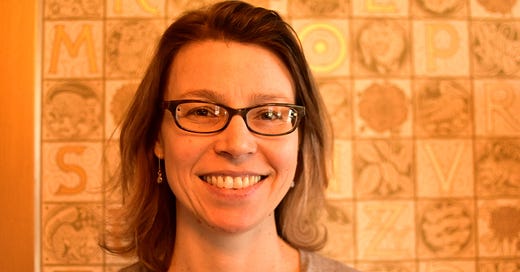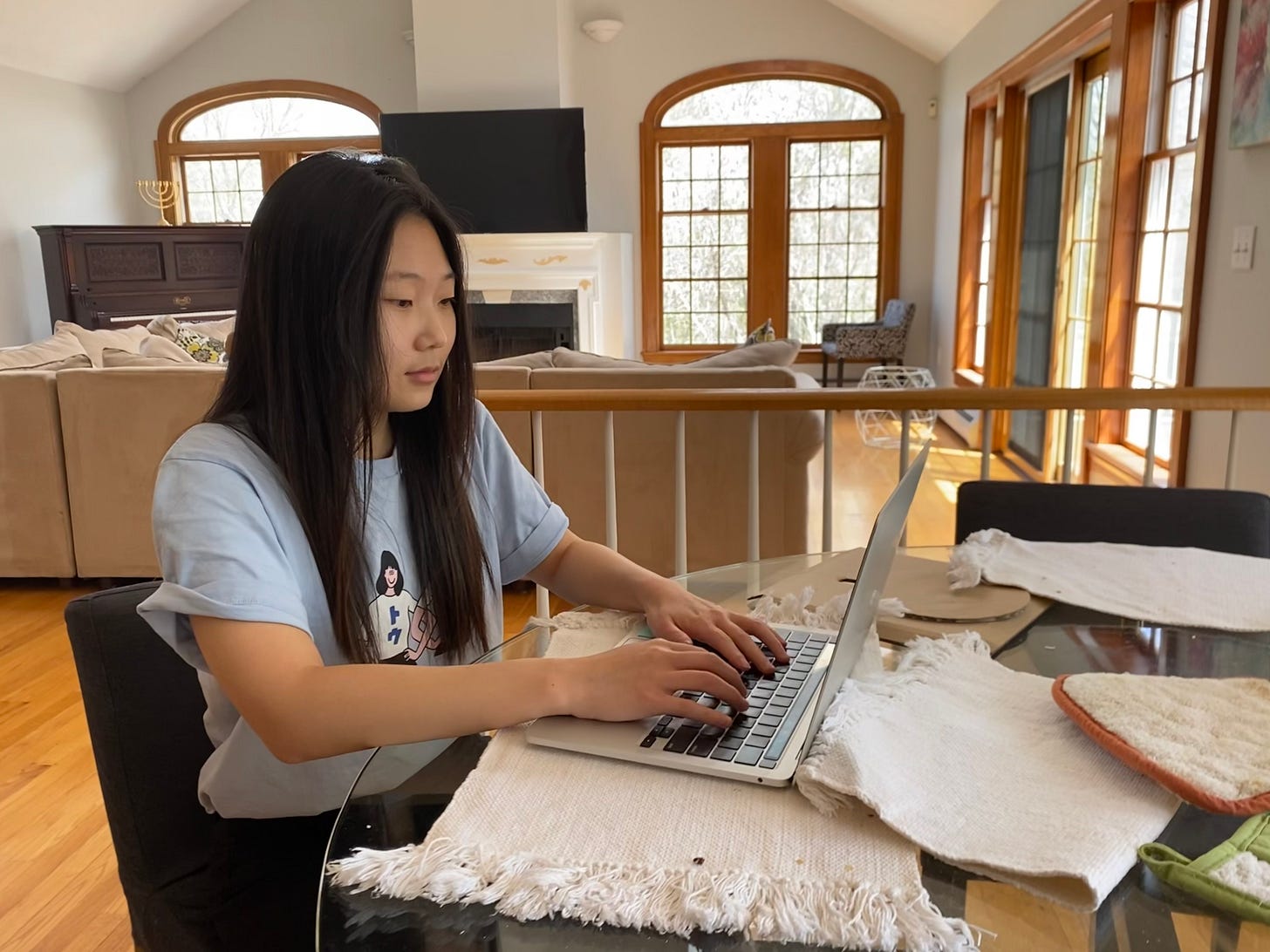Everyone has a story. Emily Walton (photo, top) is a sociologist who has engaged her students at Dartmouth to dig into the fabric of the Upper Valley to uncover and share the stories of those who live here. Inspired by Humans of New York, a photoblog that captures the lives of New Yorkers by telling a single tale at a time, Walton is bringing the concept home. In short, she’s interested in you and your neighbors.
The first few profiles are already published on the project’s website and Facebook page. Contributors speak about living with deafness, family relationships, a favorite mentor, coming out as gay. More stories are in the pipeline. Yours could be among them. If you would like to share your story, or would like to recommend someone, you can indicate your interest here or email Walton and her students at humansoftheuppervalley@gmail.com.
In an email interview, I was awash in questions. Here are some of them, with Walton’s (very lightly edited) responses.
1. How did this project come about?
As a sociologist, I’ve always been interested in people. In particular, I want to understand the building blocks of equitable relationships. How do people get along? How can we create and sustain community in this diverse world? One important feature that distinguishes a community from a collection of individuals is having a shared story. This project was inspired by Humans of New York, a photoblog that captures and shares snapshots of people’s lives in the city and around the world. I find it amazing that I can read about someone I don’t know and never will meet, but feel a connection to them because I resonate with some element of their story. I am also amazed by the uniqueness of people I read about.
So, my idea for Humans of the Upper Valley was meant to capitalize on this notion that we can both relate to the shared humanity of others while still appreciating the things that make them special and different. The Upper Valley is so cool because it is this nexus of people who have lived here for generations, and newcomers who appreciate the ability to combine a good job and a rural lifestyle. This is also challenging for community, because there are those who see their home changing around them and those who would like to make this place their home. Humans of the Upper Valley is a low-key way to create a sense of connection amongst all of us, to help us appreciate our similarities and learn from our differences.
2. Who is involved in this project?
I created this with a few of my sociology students at Dartmouth – currently Lily Ren, Jessica Cortez, Kayleigh Bowler, and Matt Gannon. I bring the sociological motivation, and they bring the human connections and technical expertise to make it happen. Students will of course come and go, but we will try to keep the stories flowing. I think it is also so important for Dartmouth students to get out and understand the amazing community they live in.
3. How are UV people selected to tell their stories in HOUV? What makes a “good” story?
Our original idea was to walk up to people randomly on the street and start talking. But, the pandemic happened, and winter happened. So, right now we are advertising on social media and by posting flyers around the towns. We welcome participation from anyone who would like to tell their stories, and we also welcome nominations if you think there is someone we should reach out to. . . The point is to create a kind of intimacy with strangers. If we can learn about and relate to others’ motivations, their fears, their dreams, maybe we can nurture empathy and understanding.
4. The stories appear as the subject’s own words. Do they write the stories, are the stories edited? What is the process from person to website publication?
We contact people via email and the students are currently doing short interviews on Zoom. We have a list of questions to get started. We try to get deep quickly by asking things like: What makes you feel loved/respected/appreciated? What is the biggest obstacle you have overcome? What is the most common misconception people have about you? We record the interviews, then the students transcribe and edit participants’ words down into a short story with a a theme. We ask all participants to send a photo of themselves and give a thumbs up to the final story before it goes to print. Our goal is to publish two stories per week.
5. Can you provide a thumbnail sketch of yourself?
As I mentioned, I am a sociologist. I study how community happens in a variety of settings, like diverse urban neighborhoods, within interracial relationships, and now in rural places. I grew up in Montana, but have lived in Lebanon since 2012. I love this town! I am also the mother of two incredible (and challenging) daughters, and I am married to a hilarious and handsome overachiever, Joel Dizon.
———————————————
Welcome! You’re reading Artful, a blog about arts and culture in the Upper Valley, and I hope you’ll subscribe and then share this with your friends and on your social media.
And in case you are wondering . . . Susan B. Apel shuttered a lifelong career as a law professor to continue an interest (since kindergarten) in writing. Her freelance business, The Next Word, includes literary and feature writing; her work has appeared in a variety of lit mags and other publications including Art New England, The Woven Tale Press, The Arts Fuse, and Persimmon Tree. She connects with her neighbors through Artful, her blog about arts and culture in the Upper Valley. She’s in love with the written word.





Wow! Judging from the readership of this post and the number of new subscribers, it seems that the Upper Valley wants to read more about themselves and their neighbors in HOUV. Congrats to Emily Walton and her students. The well-written profiles thus far are an engaging window into the UV. Here’s to more to come!
So, from another point of view, I thought the stories were interesting and uplifting to read! Keep 'em coming!